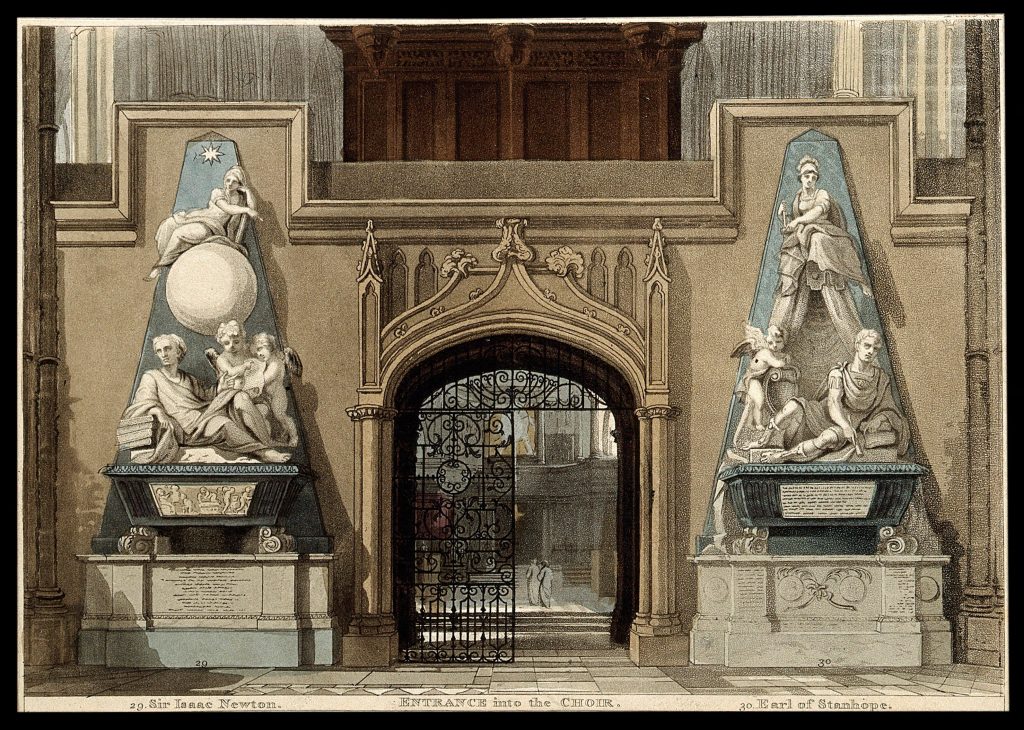I have never been a fun of non-fictional books but as the years went by I found myself picking up more books that fall under this category and finding them an enjoyable read. Most of these books were read on recommendation and one such great read was “The Ten Most Beautiful Experiments” by George Johnson. His work describes experiments that discovered what we may now consider basic science. Some of the experiments described were new to me, all the experiments were indeed beautiful and I couldn’t help but acknowledge the intricate and delicate designs of these experiments. One such experiment was by Isaac Newton and it answers the question “What is a Color?“.
THE MAN
Born 4th January 1643, Isaac Newton is best known for describing the motions of the heavens and showing how gravity was responsible for making apples fall and holding planets together. His contributions to science span the areas of Physics, Mathematics and Astronomy. Known as one of the most influential scientists, his greatest works includes building the first practical reflecting telescope and defining answering the question “What is a color?” using a series of beautiful experiments.

Newton spent a considerable amount of time pondering the question “What is a color?”; contemplating the peculiarities of color and light. Following the great plague, he returned to the city with findings that shook the scientific community. He continued to describe theories and design inventions which served as a foundation for many more scientists after him. His greatest contributions to science all came before the age of 35. He now lies buried in Westminister Abbey (UK), one of the greatest minds that ever lived.
THE PROBLEM
What is a color? The earliest scientists to contemplate light and colour believed that the eyes were the source of light, casting it on everything we looked at. Some also believed that color was merely varying combinations of light and darkness. After all, yellow is nearly white and blue is almost black.
Closer to Newtons time, these ideas had changed. The idea of reflection and refraction had been well described. Even the degree of refraction could be predicted by something known as Snell’s law. Overtime, the general conclusion had become that somehow, pure white light got stained by matter as it hit the surface of various objects and this staining is what produced the variety of colors we see.
THE BEAUTY
This understanding of light did not satisfy Newton. Newton started from scratch in his approach to understanding light. He observed various objects which appeared as different colors depending on which angle the observer was looking at them from. He went on to make further observations that dark substances ground into a powder became lighter in appearance and in contrast, substances soaked in water become darker in color. From here, he went on to study the effect of glass plates on light.
He observed that white light through a combination of flat and spherical lens produced a colourful mesmerizing pattern. Repeating the same experiment with a blue ray produced simpler dark and light circles, nowhere near the colourful spectacle produced by white light.
Newton continued many such experiments including poking around the back of his eye with a smooth rod to see what distortions in light were created. His final set of experiments involved passing sunlight through a prism producing the typical rainbow colors we are now used to and then passing this through a second prism to once again get the full “white” sunlight. You can see that experiment here: Newton’s Prism Experiment: What color is white light? Want to know how to make it?
The conclusion, the prism didn’t add anything to the light as many believed, it just split up the light. Each wavelength or color was bent by the prism at a slightly different angle, creating the image of the colors fanning out. The final nail in the coffin involved Newton first separating white light into its different colors and then one by one passing each color through a second prism. The same color was produced at the other end; once a color was separated from white light it could not be altered any further. So what is a color?, a ray of light naturally disposed to bend a certain way due to its wavelength.
THE LEGACY
Newton’s work closed the page and answered the question what is a color?. Nothing more than distinct wavelengths of light. We now know that it is not the sun that brings out the green in grass or the yellow in a banana, rather the grass and the banana are bringing the color out of the sunlight. Put simply, “the world is colourful because it consists of bodies variously qualified to reflect one sort of light more than another”.

This represents just a fragment of Newton’s contributions to science. With an allegorical monument in his name, making sense of concepts that eluded Galileo and developing a new generation of powerful telescopes, Issac Newton has gone down in history as one of the greatest scientist that ever lived.
